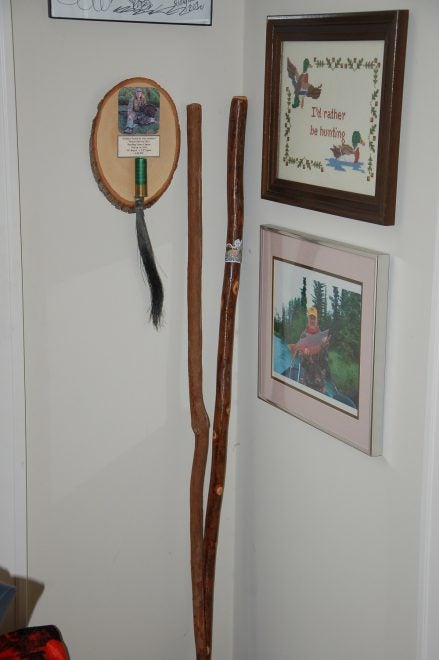The Staff of Life: Thoughts on the Walking Stick
Dr. John Woods 10.24.17

In February 1988, I was given my first walking stick. It came as a gift from rabbit hunting houndsmen Max Phillips and Jack Batte, during a briar-laden bunny chase in Jones County, Mississippi. During those hunts I also learned the difference between a rabbit hunter and a rabbit chaser. The “Chasers” were really only interested in listening to the “bawl” of their beagle hounds and rarely fired a shot at a rabbit. They still carried their favorite thorn-scarred shotguns though, as if a badge of honor.
I also was taught the value of a good walking stick. Mine was hand-cut and trimmed from a sapling tree growing alongside a rabbit trail we were hunting. The smooth, rounded top rests just under my chin. This length is apparently not arbitrary either, as I have another “factory” walking stick, and it measures the same. It is the perfect length for easily grasping and walking.
So, why have a walking stick and what it is for? In 1988 I was only 38 years old, but the walking staff balanced me up and down hills, swales, through valley and dale, across low-lying ditches, and even through thickets, briars, and woodlands. A walking staff can also help you negotiate the crossing of a barbed wire fence.
Now that I am post-retirement age, I find the grip and support of a walking stick even more useful and comforting when afield. It is an extra balance beam for traversing flat land, grown-up grassy knolls, for throwing back hordes of those wiry forever-green thorny vines, and all manner of upheaved terrain, hidden woodland potholes, and such.
Walking sticks need to be picked carefully. You can buy one, but make sure it “fits” you. If you decide to fashion one yourself, pick a stout sapling about an inch or slightly bigger and a length up to your chin or eyes. Round off the top and the bottom — don’t cut the bottom into a spike. Some people add rubber tips from the hardware store, but I do not. Trim off any small limbs, sand it down, and apply varnish if you wish.
Walking staffs have many uses besides aiding the stroll. They can be used offensively or defensively against threats. Use one to knock back creepy-crawlies or to turn over rocks and such along the way. When you go afield to hike, hunt, or walk about, carry your handy staff.